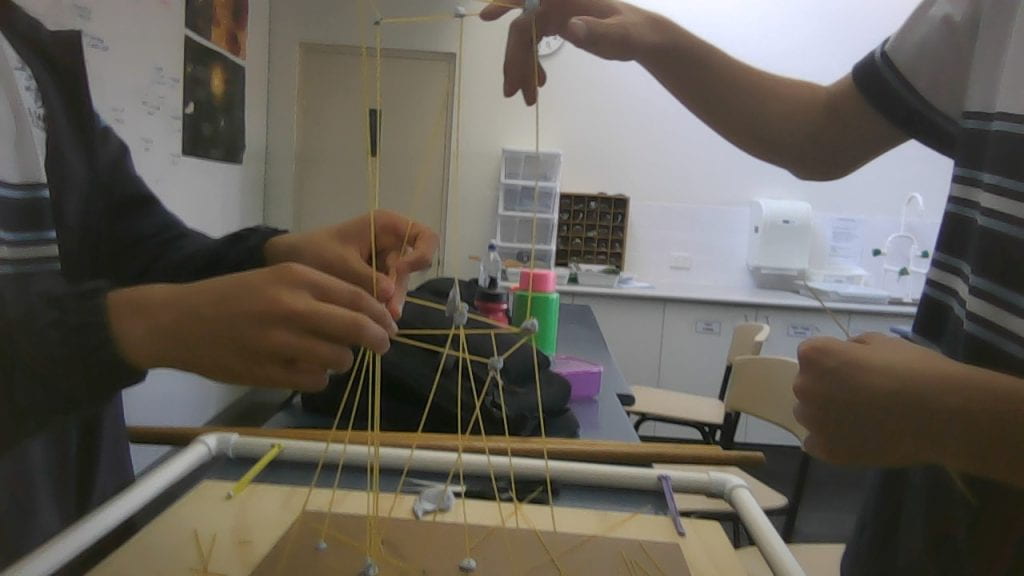Planning and development-
For this term (2) the ‘drama production: play’ class decided to recreate the English play “Fugee” by Abi Morgan, for this, we had to begin with creating a directorial vision as a class. For this, we had to decide on the style of theatre that we would do, what emotional aspects we would involve, the themes that we would create, and our intended audience impact. Fugee is a play mainly focused around the life of an African boy named Kojo, we follow throughout the play the life story of Kojo and all the tragic events of his past through his broken memories.
For us our intend audience impact was to make them feel how fortunate they are compared to those that are migrants in foreign countries, this was also supported in our play with the facts at the end that made the ending a heap ton powerful while also helping the audience to understand that this is a real-world matter and not just a topic for a drama play.
Our director’s vision was to create a Brechtian-styled theatre performance that involved themes of family, love, child soldiers, asylum, friendship, and trauma and also revolved around the emotional aspects of each character. We also had to take into consideration how we would make the audience think/feel and why would come to watch it.
Rehearsal Process
In the play Fugee by Abi Morgan I played the multiple characters however I would solely like to focus on Kojo’s Father.
To build this character I had to first research and relate back to mainly poorer countries that are corrupt with very high levels of poverty, then I also thought of his relationship to the other characters such as Kojo, the mum, and the younger brother. Once I had decided upon what my character’s emotional journey was and his backstory I had to make certain choices (movement/vocal) to help me to develop my character further for the audience. Here are some choices I made to further shape my character-
Weight (movement)-
For this character, I imagined him to have a heavier weight to him especially when he was carrying the box in the second last scene. For this in many scenes, I slowed my character down and breathed almost heavier to recreate the effect of having more weight. As mentioned before in the scenes where I got shot I added extra weight to give the effect to the audience that the child soldiers have way more power than me.
Pace (Vocal)-
For the pacing of my voice, I imagined that the father was a quite easy-going character (a loveable one) that the audience would feel for even more. In most scenes when it would be happy like the cake scene for instance the lines “your getting too big for a birthday cake” I would slightly speed up and almost joke around with the family in this scene, in other scenes such as my two death scenes as the father the one lines of “Kojo!” would also be fast back a lot slower to almost put seriousness to my character especially when my top priority as the dad is to protect my son.
Energy (Movement)-
To go with the pace of my voice I would give my character quite happy energy and aura around him which is kind of the opposite of how I am walking. To go into more depth on this instead of having a very slower-paced character that fitted my walking I would instead decide to contrast the slower-paced walking with faster-paced energy with facial expression and relation to other characters.
Pause (Vocal)-
With the pause in my voice in most of the scenes I decided to take quite small pauses but in death scenes bigger ones to represent seriousness which came in on the line “Kojo!” and after that, I would use my breathe to add effect to the scenes. Although this really isn’t a major choice going into the play I would still say that it helped me to understand my character more and also helped me in the relation to other characters.
Performance
From both of our performances, I would say that I was very happy with my individual performance and also the performance of the group. Even though I made some mistakes with my (cockney) accent and a few prop and movement mistakes that messed up some of the timing of lines.
For me the only thing that I would have done differently was the voicing of the father in the whole play, some scene it wasn’t very storng for the audience to believing that I was the loving father of Kojo, I could especially feel this in the train scene where I said “take your feet off the seat”. However, in the end it was quite fun and I learned a lot about multi-rolling and how to implement each character’s emotional backstories and journey throughout the scenes.
Final Evaluation
In terms of the final production I was very happy with most of the aspects, the audience was also very into the perfromance and laughing at many scenes in the play. The end scene was also very nice with the real cake which for me as one of the actors made it seem very real.
The one thing that we as an ensemble need to work on was the transitioning between scenes, sometimes there was some people late to their positions and others wen they went on the worng time. However, in the end it still work.
Next time the thing that I would do differently was change the staging form, this is because even though I liked the current staging form that we decided upon I would still change because I would like to grow my knowledge on different forms.
For this production I am very proud of how we all did as the Drama 9/10 class and I will definetly continue to do drama productions in the future.












